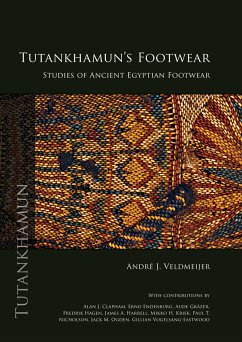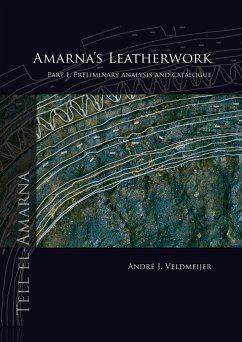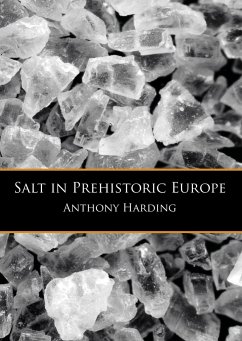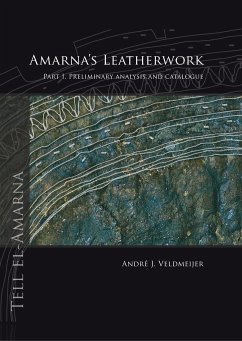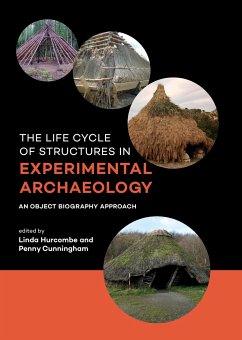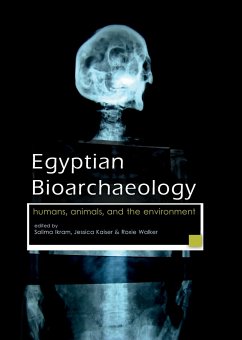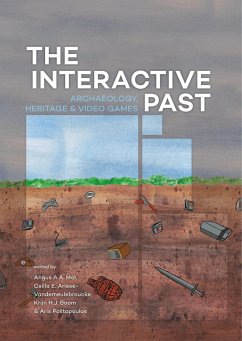
Artisans versus nobility?
Versandkostenfrei!
Versandfertig in 1-2 Wochen
30,99 €
inkl. MwSt.

PAYBACK Punkte
15 °P sammeln!
In prehistoric Europe hierarchic societies arose and developed technological systems and processes in the production of objects related to everyday use, on the one hand, and items of religious and symbolic character emulating prestige and luxury, on the other, while both types of objects may not always be clearly distinguishable. This volume deals with questions of how artisans and other social groups, involved in these productive processes and social practices, reacted to and interacted with the demands connected with elites identities formation, affirmation and reconfirmation practices. Inno...
In prehistoric Europe hierarchic societies arose and developed technological systems and processes in the production of objects related to everyday use, on the one hand, and items of religious and symbolic character emulating prestige and luxury, on the other, while both types of objects may not always be clearly distinguishable. This volume deals with questions of how artisans and other social groups, involved in these productive processes and social practices, reacted to and interacted with the demands connected with elites identities formation, affirmation and reconfirmation practices. Innovations and the development of new technologies designed to satisfy the needs of ostentatious behaviour and achieving prestige are key issues of this volume. For example, how can we identify the consequences of such processes, how can we define the role(s) that the craftspeople played in such contexts, and are these always as clear-cut as usually portrayed? The book's common aim is to investigate the economic, socio-political, as well as the technological contexts and backgrounds of the make-up of material culture and technologies in specific prehistoric periods. We examine which role(s) artisans may have played in status and identity formation processes, in rituals and in symbolic performances, in other words, in each aspect of life and death of selected Chalcolithic, Bronze and Iron Age populations in Europe and the Mediterranean. Many aspects of the social interaction patterns between the different groups of people in those periods have not been adequately discussed and investigated, especially the artisans' important role(s). This volume aims to redress these imbalances by investigating how social groups interacted with each other, and how we may recognize such interactions in the material remains.ContentsEditors' BiographiesList of contributorsEditors' AcknowledgementsArtisans versus nobility? Crafting in context. IntroductionAnn BrysbaertProduction as activity.Defining the context of casting production in late prehistoric ScotlandDaniel SahlénA place for crafting? Late Bronze Age metalworking in southern Scandinavia and the issue of workshopsAnna SörmanThe power of production in the northern Iberian world (6th-3rd centuries BC)Alexis GorguesRich metallurgists' (?) graves from the Varna I cemetery. Re-discussing the social role of the earliest metalworkersVerena Leusch, Steve Zäuner, Vlado Slavcev, Raiko Krauß, Barbara Armbruster and Ernst PernickaWho's in charge here? The making of military communication vectors in the Late Iron Age in western EuropeAlexandre BertaudChipped stone tools from the Early Bronze Age settlement of Minferri (2100-1650 cal. BC) (Lleida, Spain). Raw materials, technology and activities inferredDioscorides Marín Castro, Juan F. Gibaja Bao, Natalia Alonso Martínez, David Ortega Cobos, Antoni Palomo Pérez and Andreu Moya GarraThe artisans of metal and the elite in the western Hallstatt zone (630-450 BC) Emilie DubreucqFor blacksmiths, are advanced technical skills the way to achieve elite status? The case of the Western Hallstatt area during the transition between First and Second Iron AgesAnne Filippini




